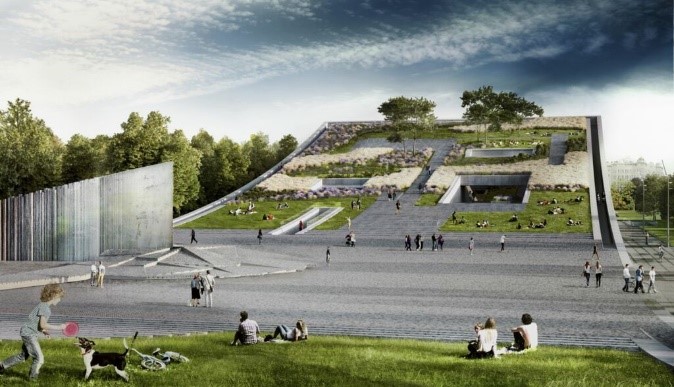The Liget Budapest project started just 10 years ago, and among its new buildings, the Ethnography Museum was the first to begin construction. As the final works are currently being carried out on the building, it is already clear that the Museum of Ethnology will receive a world-class new home for the 150th anniversary of its founding, said the ministerial commissioner of the Liget Budapest project during the press tour of the building on Wednesday.
László Baán recalled that there had previously been many disputes surrounding the project. However, it is now clear that the concerns were unfounded, as no buildings were built on green space: the Museum of Ethnography was also completed in the concrete and cobbled area of the former Parade Square, with a significant increase in green space thanks to the roof garden and surrounding landscaping.
As one of the country's most important public collections, the Ethnographic Museum is getting a home for the first time in 150 years that was specifically designed according to its own needs, emphasized the ministerial commissioner.
Marcel Ferencz, the head of Napur Architect, which drew up the house's plans, added: they worked closely with the museum's specialists during both the planning and execution. Currently, more than a thousand workers, engineers and other professionals are working on the building, which will open a new gate to the Liget at the end of the Városliget tree line.
According to the designer, the house consists of three main elements: the park will be connected to the two sloping roof gardens, which can be walked around freely, and the entrance to the public areas, which include the Ceramic Square, will also be free. These are complemented by the museum functions: the exhibition and event spaces, the Youth Museum, the projector, the museum teaching staff, the library, the archive and the offices.
The glass facade of the house has also been completed on both sides, as well as the metal grid mesh that shades it, consisting of almost half a million pixels, which displays a reinterpretation of 20 Hungarian and international ethnographic motifs.
Lajos Kemecsi, the general director of the museum, emphasized that many attractions are already being prepared for the opening: the grandiose Kerámiatér, which displays 3,500 artefacts, can be visited even without a ticket, while the temporary exhibition We have arrived presents a cross-section of the collection on more than 1,000 square meters.
In March, the most spectacular unit of the permanent exhibition, the ZOOM space, which presents a 7-meter barrel boat and the oldest Székely gate, as well as the museum experience space called Méta, opens in March.
A video presenting the new building of the Museum of Ethnography can be viewed here
Source: MTI/vasarnap.hu













